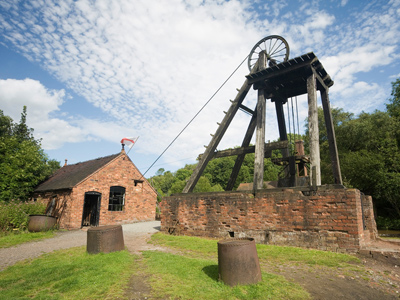
The Industrial Revolution
This topic sounds more like it should be in the GCSE history syllabus than geography but the examiners feel that it is necessary to look at how British industry has been influenced by the landscape and natural resources. It is also part of the story of urbanisation and can help you to understand how and why urban areas have developed.
Many social, environmental and economic factors affect the location of industry, some have a greater impact than others. At the start of the Industrial Revolution, British industry was sited according mainly to physical factors rather than socio-economic factors. The new factories of the Industrial revolution required power. The start of the factory system was when the silk and cotton mills were established in the Derwent valley of Derbyshire.
One of the main reasons for siting them here was that they were close to their source of power - they were water mills. Later factories used steam power and so industry appeared near coalfields. Coal is bulky to transport and could only be taken from coalfield to consumer by horse and cart so the shorter the distance from coalfield to factory, the better. The same applied to the raw materials. These also tended to be bulky items that were hard to transport, influencing where factories were built.
Accessibility was another key factor. The only method of transport available to the industrial revolution workforce was Shank's Pony (walking!!) so factories were often sited in cities. The best cities were in the Midlands and the North of England plus Edinburgh and Glasgow because these were close to coal and navigable waterways - coal and other raw materials could be brought in by boat. It also meant that the workforce only had a short distance to walk to get to work. A downside of this for the factory owner was that it was difficult to extend the business as land in cities, even then, was limited. Another reason for early industry to be sited in cities was that there were plenty of potential workers nearby, which made it easier to hire them.
Communications at the start of the Industrial Revolution were poor, the road network was not well developed which meant that it could be difficult getting the products to where they were to be sold. Cities had the best lines of communications so again, that made them a suitable choice.
Ready for more?
not all...
quizzers. Try to win a coveted spot on our Hall of Fame Page.







